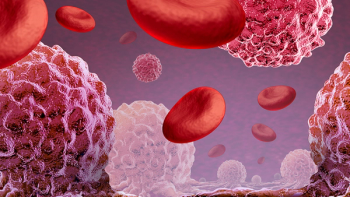
Balancing A Love of Cats With Lymphedema After Breast Cancer
If you have lymphedema after breast cancer and want to enjoy the company of cats, there are strategies to avoid potential problems, especially scratches.
What should a person developing lymphedema after breast cancer do to balance loving cats with a health challenge that means scratches are off-limits?
When I was first diagnosed, I had a 23-pound middle-aged cat. This was not necessarily a cat I had to worry much about, as he was old and mellow. Still, I was careful in general. Knowing scratches happen accidentally, I wore long sleeves when I brushed this cat. Plus, I began to ensure that my right arm was covered by a sheet when I slept.
While that cat has passed on, there are new cats in my home, both rescues. One was an older cat when he moved in, a docile creature with the temperament of a sweetie pie despite earlier abuse. He indicates no threats at all to my good health, though I still protect my right arm near him in case he surprises me one day.
Then there is a maturing kitten, rescued at 1.5 pounds, with an extra toe on each foot providing more opportunities for scratches. As she also wants to nip when she feels threatened, we are working on responsible behavior, so that rarely happens and never to my arm. I safeguard my arm during waking and sleeping hours.
With both cats, I use handy suede gloves that go past my elbows if I need to groom them. While the docile cat loves to be groomed, it may reach out in play, which makes me vulnerable, despite his efforts never to harm me. The growing kitten sees grooming tools as toys and goes into full play mode, wanting to bite or scratch, with my arm in the way.
Enter gloves designed for rose gardening. These thick coverings work well to protect both arms, not just my arm with lymphedema. Early on, I tried dishwashing gloves but found that gardening gloves are more durable.
Although I try to make sure that my right arm is always out of harm’s way, I know accidents can happen. I got a few scratches from the kitten in the early days, all on my left arm save for one small, accidental puncture wound where a nail got me as she climbed a chair.
In such cases, you do what you are supposed to do. I cleaned the miniature wound with appropriate supplies right away and then treated it with an antiseptic. I also keep a strong antibiotic cream to use as needed. Having the right supplies to treat a scratch or any wound is essential. In addition, see a doctor or go to urgent care if a wound worries you at any point.
Another piece of advice is to trim cats’ nails. If you can do that yourself, great. I tried. Maybe when my kitten is older, I will succeed, but I do not want to risk getting scratched and cannot hold nail clippers while wearing gardening gloves. Therefore, every few months, tech assistants at my vet’s office trim my rambunctious cat’s nails. It is a splurge but under $20. As I do my own manicures, I save money grooming myself. The older cat gets his nails trimmed annually.
With two cats, of course, there is a good bit of vacuuming. My vacuum was heavy, though, and I got tired of using it during a time when I was guarding against a possible lymphedema flare threatened by something other than cats. I splurged again and bought a lightweight, cordless vacuum specializing in pet hair. Now I love to vacuum, and the kitten loves to follow along.
Most importantly, cats can be trained to be respectful of their humans. Diversion and toys help with some behaviors (and toys can be empty toilet rolls and paper bags). Cats also learn “no” and how to respect boundaries. Working with my kitten, I use a pitiful voice to exaggerate “no” if she is about to forget a boundary. Ultimately, Lucy and Fluff make my life much sweeter.
For more news on cancer updates, research and education, don’t forget to





